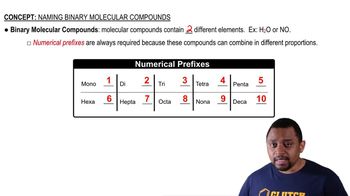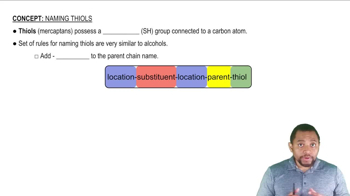Here are the essential concepts you must grasp in order to answer the question correctly.
Ionic Compounds
Ionic compounds are formed through the electrostatic attraction between positively charged ions (cations) and negatively charged ions (anions). They typically consist of a metal and a non-metal, where the metal donates electrons to the non-metal, resulting in a transfer of charge. This leads to the formation of a crystalline structure with high melting and boiling points.
Recommended video:
Molecular Compounds
Molecular compounds are formed when two or more non-metals share electrons through covalent bonds. These compounds can exist as discrete molecules and often have lower melting and boiling points compared to ionic compounds. They can be classified based on the number of atoms involved, such as diatomic or polyatomic molecules.
Recommended video:
Naming Binary Molecular Compounds Concept 1
Naming Conventions
The naming of ionic and molecular compounds follows specific conventions. Ionic compounds are named by combining the names of the cation and anion, often with the anion ending in '-ide' for simple ions. Molecular compounds use prefixes (mono-, di-, tri-, etc.) to indicate the number of atoms of each element, with the second element typically ending in '-ide'.
Recommended video:
Rules for Naming Thiols Concept 1
 Verified step by step guidance
Verified step by step guidance Verified video answer for a similar problem:
Verified video answer for a similar problem:



 1:10m
1:10m